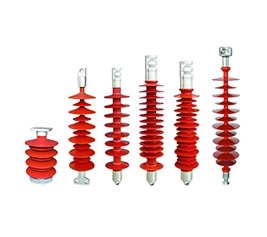en
+
Silicone rubber is divided into thermal vulcanization type (high-temperature vulcanization silicone HTV) and room temperature vulcanization type (RTV), among which room temperature vulcanization is divided into polycondensation reaction type and addition reaction type.
High-temperature silicone rubber is mainly used in the manufacture of various silicone rubber products, while room temperature silicone rubber is mainly used as adhesives, potting materials or moulds. The thermal vulcanization type is the largest, and thermal vulcanization type is divided into methyl silicone rubber (MQ), methyl vinyl silicone rubber (VMQ, the amount and product brand the most, mainly used in electrical aspects, such as lightning arrester umbrella skirt and insulator umbrella cover), methyl vinyl phenyl silicone rubber PVMQ (low-temperature resistance, radiation resistance), other eyes silicone rubber, fluorine silicone rubber, etc.
Silicone rubber can be used in a variety of products including voltage line insulators, automotive applications, cooking, baking and food storage products, apparel such as underwear, athletic wear and footwear; Electronics, medical devices and implants, as well as products for home repairs and hardware, such as silicone sealant.
Silicone rubber was first synthesized by ferric chloride as a catalyst in the United States. In 1945, silicone rubber products were introduced. In 1948, silicone rubber reinforced with high specific surface area gas phase white carbon black was developed successfully, which made the performance of silicone rubber jump to the practical stage and laid the foundation of modern silicone rubber production technology. The United States, Russia, Germany, Japan, Korea and China are producing silicone rubber from the synthesis of dimethyl dichlorosilane. China's industrial research of silicone rubber began in 1957, and then a number of research institutes and enterprises developed a variety of silicone rubber. By the end of 2003, China's production capacity of silicone rubber was 135 thousand tons, including 100 thousand tons of high-temperature rubber.
There are many ways to classify silicone rubber, usually divided into solid silicone rubber and liquid silicone rubber according to the shape before curing; According to the vulcanization temperature is divided into room temperature vulcanized silicone rubber, high-temperature vulcanized silicone rubber; According to the different monomer used, it can be divided into methyl vinyl silicone rubber, methyl phenyl vinyl silicone rubber, fluoro silicone, nitrile silicone rubber, etc. The different performances and use can be divided into general type, super low-temperature resistance type, super high-temperature resistance type, high strength type, oil resistance type, medical type and so on.
Silicone rubber has excellent heat resistance, cold resistance, dielectric property, ozone resistance and atmospheric ageing resistance and other properties, silicone rubber's outstanding performance is the use a wide temperature, can be used in -60℃ (or lower temperature) to +250℃ (or higher temperature) for a long time. But the tensile strength and tear strength of silicone rubber and other mechanical properties are poor, at room temperature its physical and mechanical properties are not as good as most synthetic rubber, and in addition to nitrile silicon, fluorine silicone rubber, the general silicone rubber oil resistance, solvent resistance is poor, so silicone rubber is not suitable for ordinary conditions, but very suitable for many specific occasions. For example, the umbrella cover material of a power composite insulator is made of high-temperature vulcanized silicone rubber (HTV), which is formed by an integral injection process. Its main function is to protect the inner insulator mandrake.




